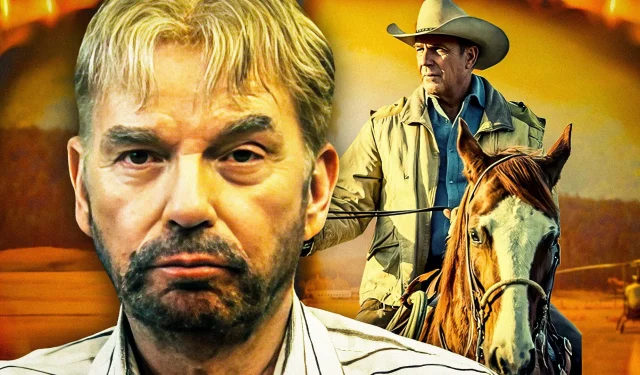
Landman: The Next Frontier in Neo-Western Television
Often heralded as the successor to the iconic series Yellowstone, Taylor Sheridan’s latest production, Landman, is capturing significant attention for various compelling reasons. Since its debut in 2018, Yellowstone, headlined by Kevin Costner, emerged as one of television’s most acclaimed neo-Westerns. However, the series wrapped up its narrative arc in late 2024 with a divisive conclusion to its fifth season, leaving a considerable void in the Western genre. This has paved the way for other shows like Landman to take center stage, especially on platforms like Paramount+ that already host several of Sheridan’s acclaimed titles.
Tommy Norris: A New Iconic Character
Tommy Norris, portrayed by Billy Bob Thornton, emerges as a formidable protagonist in Landman, widely regarded as the most intriguing character Sheridan has developed since John Dutton. Both characters share striking similarities in their character arcs and dialogue—crafted with the same rugged charm that resonates with audiences. While Costner’s appeal stemmed from a long-standing film career, Thornton captures the essence of a seasoned industry veteran, enriched by complex relationships and moral dilemmas.
Shared Themes of Toughness and Tenderness
Both Tommy and John are depicted as battle-hardened men whose professional lives take precedence over personal happiness. Their tough exteriors often conceal a deep commitment to their families, embodying the struggle of balancing personal and professional pursuits.
Exploring Familial Dynamics
Family remains a crucial theme in both Landman and Yellowstone. While Yellowstone featured an expansive cast engaged in dramatic conflicts, Landman narrows its focus primarily on Tommy and his immediate family. Intriguingly, family dynamics in Landman contrast sharply with the explosive relationships seen in Yellowstone. For instance, Tommy’s interactions with his younger children are characterized by a more innocent sibling rivalry compared to the tumultuous relations of the Duttons.
The Oil Industry’s Human Cost
Landman also poignantly tackles the lives of oil workers, shedding light on the tragic aftermath of a catastrophic explosion that claims the lives of several crew members. This narrative choice underscores the diversity of characters affected by the industry’s perilous nature, further enhancing the show’s emotional depth.
Contrasting Wealth and Labor
Both series effectively illustrate the divide between the wealthy and the laborers within their respective industries. In Yellowstone, the bunkhouse crew encapsulates the solidarity among those who toil on the ranch, while in Landman, the oil workers showcase similar brotherhood amidst harsh conditions. As the story unfolds, wealthy characters like Monty Miller, portrayed by Jon Hamm, mirror the disconnect some affluent individuals have with their working-class counterparts.
Revisiting the American Dream
A recurring motif in Sheridan’s work is the exploration of the American Dream. Both Landman and Yellowstone invite audiences to reflect on their ideals about success, morality, and the pursuit of happiness amidst the struggles tied to land and resources. Sheridan refrains from simplifying these themes, often presenting complex characters that provoke thoughtful discourse about right and wrong.
Modern Dilemmas in Organized Crime
Sparking intrigue, Landman mirrors Yellowstone’s approach to contemporary organized crime. The series opens with a gripping scene involving Tommy and cartel members, highlighting the high stakes within the oil industry. This parallels Yellowstone’s adrenaline-fueled confrontations with gangs, reiterating the dangerous liaisons that come with industrial titans navigating through lawlessness.
Neo-Western Elements
Though the backdrop of Landman isn’t as overtly Western as that of Yellowstone, it embodies neo-Western traits through its portrayal of violence and the quest for wealth. Unlike traditional Westerns that rely on gold and guns, these modern narratives revolve around the oil economy and territorial disputes, drawing parallels to an evolving American landscape.
Character Archetypes and Development
Tommy’s son, Cooper, reflects elements of the prodigal son narrative found in Kayce Dutton’s journey. Despite differences in their respective plotlines, both characters navigate conflicts rooted in familial expectations while displaying a consistent sense of morality and vulnerability as they confront challenges in their lives.
The Land as a Character
In both Landman and Yellowstone, the land itself feels like a living entity, deeply intertwined with the narrative. The negotiation for ownership in Landman propels the plot, mirroring the significance of John Dutton’s territory. The harsh environment displays its own allure and danger, framing the struggles of those who depend on it to thrive.




Leave a Reply